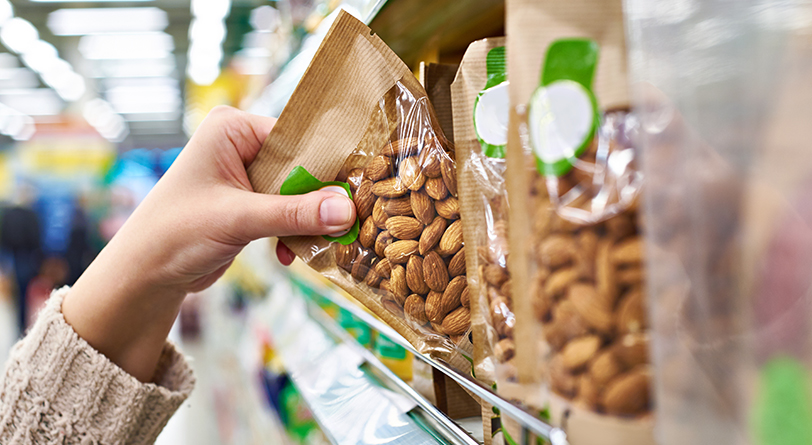Academics Examine Food Waste and Packaging

Michigan State University (MSU) School of Packaging recently completed a study on food waste that offers insights for packaging companies as they work to keep foods fresh as long as possible.
During a November 16 webinar, the researchers outlined several recommendations from their study that was sponsored by the Environmental Research and Education Foundation (EREF) and AMERIPEN—the American Institute for Packaging and the Environment. EREF and AMERIPEN summarized the data in a white paper, with the MSU researchers expected to release detailed findings in peer-reviewed publications later.
Eva Almenar, a professor for the MSU packaging program in East Lansing, and Korey Fennell, a graduate student at MSU in Almenar’s laboratory, said during the webinar that the study examines how consumers use packaging in the home and how those habits relate to food waste.
“The research emphasizes the importance of consumer awareness and education in making informed choices, ultimately contributing to a reduction in food waste,” AMERIPEN says about the research.
Consumer Education Needed
The white paper discussed during the webinar titled “Minding the Gap: Consumer Awareness of Packaging and Food Waste Reduction” concludes there is a pressing need for education about packaging materials and formats and what can be done to reduce food waste. For example, the paper, which can be found here, cites a study that notes that each person in the U.S. wastes an average of 325 pounds of food per year. That waste also contributes to greenhouse gas emissions.
MSU researchers found that consumers were not adept at identifying the best packaging designs for keeping different types of food fresh. When asked about the role of various packaging formats—cans, bottles, pouches, etc.—consumers had limited understanding of how or why certain formats were used to reduce food waste. The white paper says that participants were asked to choose packaging materials that best maintain food freshness, and they chose glass, plastic, metal, and paper—in that order.
“While this appears that they may have an understanding, or perception, of material role in packaging, when queried further on why certain materials can maintain freshness, they struggled to identify how different materials addressed packaging challenges such as chemical migration, oxidization due to sunlight exposure, and other packaging material-specific performance issues,” the white paper says. “This indicates that educating consumers on how food can spoil and why certain materials are chosen is needed.”
Greater awareness about packaging that protects food against physical damage could also reduce food waste. “By educating consumers and working to develop even more advanced and effective packaging formats, the packaging industry can dramatically reduce food waste, save households money, and protect the planet from greenhouse gas emissions, climate change, and other environmental degradation,” the white paper also says.
Key takeaways include improving packaging designs for fresh produce; developing designs for dairy products, in particular, that extend shelf life; and launching consumer awareness and education initiatives that teach people about the value of technologies and other efforts to keep food safe.
Kyla Fisher, AMERIPEN program director, notes toward the end of the webinar that the study could have several policy implications, including a need to further recognize the value of packaging in reducing food waste. She also suggests that policies should continue to encourage efforts to harmonize and simplify package date labels and further explore how on-package labeling or QR codes can educate consumers.
Problem With Dates Used in the U.S.
Consumers often have been confused about the dates on various packaging, according to a Wall Street Journal (WSJ) report titled “Here’s Something Past Its Expiration Date: The Expiration Date Itself” from September 8.
WSJ columnist Josh Zumbrun explains that many of the dates on food products were never intended to inform consumers that food has spoiled or is close to doing so. Instead, the dates are used by manufacturers to inform retail stores about when food might be at its peak. “Consumers might not even realize that they’re junking perfectly good food not because it’s bad but because they are putting too much faith in expiration dates,” he writes.
The column also notes that the United Kingdom has been making a concerted effort to reduce food waste since 2007. “This has involved standardizing date labels as well as consumer-education campaigns around the meaning of the date labels,” Zumbrun writes.
Thomas A. Barstow is senior editor at FlexPack VOICE®.


